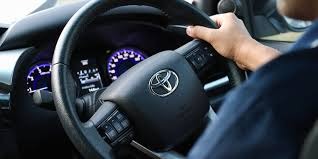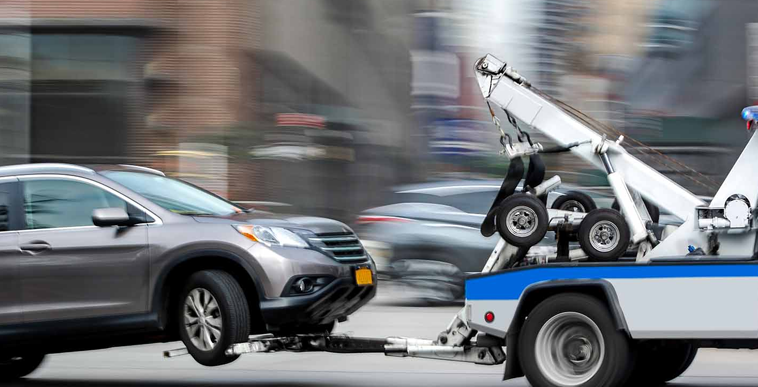Keep Your Ride Dry The Best Solutions for a Leak-Free Driving Experience
Leaking car interiors are a nightmare for any driver. That damp, musty smell or the unwelcome puddle in your floorboard can turn a routine commute into a major inconvenience. Leaks don’t just mess with comfort; they can also cause electrical problems, promote rust, and even affect your car’s resale value. Luckily, a leak-free driving experience is more than possible with the right blend of prevention, regular maintenance, and expert help. Whether you’ve spotted pesky water stains after a storm or you’re looking for ways to keep your car interior bone dry year-round, this guide covers everything you need to know.
Why Leaks Happen How Water Gets Inside Your Car
Water has a sneaky way of finding its path inside vehicles. Understanding how leaks start is step one in fixing and preventing them. Here are some of the most common offenders:
Worn-out Door Seals
The soft rubber seals lining your car doors, called weatherstripping, are your first defense against rain, snow, and car washes. Over time, these seals can crack, flatten, or become brittle, letting moisture seep into your interior.
Sunroof Drains Gone Rogue
Sunroofs add style but also introduce potential leak points. Most sunroofs have drain holes and tubes directing water away. If these become clogged with debris or start leaking, you’ll often notice water dripping from your headliner or pooling in the footwells.
Cracks in the Windshield Seal
Whether from an accident or simple age, the seals keeping your windshield watertight can degrade. Even a tiny gap invites rainwater right onto your dashboard.
Faulty or Blocked HVAC Drains
Your car’s air conditioning system is designed to expel moisture through dedicated drain tubes. If those tubes clog or disconnect, condensation has nowhere to go but inside your vehicle.
Underbody Rust and Panel Gaps
If you drive in areas with lots of salt or moisture, your car’s underbody and wheel wells take a beating. Rust or gaps in panels can open hidden entrances for water and slush.
First Line of Defense Spotting Early Signs of Leaks
Spotting a leak early can save you hassle and money. Stay alert for these telltale signs:
- Damp or musty smell, especially after it rains
- Foggy windows, even when your heater runs clear
- Wet carpets, mats, or upholstery
- Visible water stains or bubbling on the headliner
- Mold or mildew around doorways or under mats
DIY Solutions for Minor Leaks
Some car leaks are easy to tackle with a little troubleshooting and elbow grease.
Clean and Condition Seals
Gently clean door and sunroof seals with soapy water. Once dry, apply a silicone-based protectant to keep them flexible and less prone to cracking.
Unclog Drain Tubes
Find the drain holes near your sunroof or windshield, then clear out debris with a thin piece of wire or compressed air. Make sure water drains freely away from your car.
Seal Emergency Cracks
If you spot tiny cracks or gaps around your windshield or windows, use a tube of automotive-grade silicone to seal them until you can schedule professional repairs.
Replace Damaged Weatherstripping
DIY replacement kits are available at most auto parts stores. Measure your car’s doors and windows, and be sure to follow the instructions for a snug fit.
When to Call the Pros How Experts Eliminate Leaks
Sometimes, leaks are symptoms of a larger issue that needs a professional’s touch. Here’s when it’s smart to hand things over:
- Persistent moisture after DIY fixes
- Water pooling in the trunk or under the dashboard
- Electrical problems caused by water
- Noticeable rust or corrosion inside the cabin or under the seats
Industry specialists use tools like leak-detection dyes and pressure tests to pinpoint trouble spots. They can also strip down trims or panels safely to access hidden leaks without causing more harm.
Consider Modern Upgrades Protect
If you live in a region with unpredictable weather, like Utah, prevention goes beyond quick repairs. One increasingly popular solution is installing professional car wraps in Utah. High-quality wraps do more than boost your car’s curb appeal; they form a protective barrier across paint and seals, minimizing water intrusion points. Whether you’re driving through summer rainstorms or snowy mountain passes, a wrap offers year-round protection. Plus, with dozens of finishes and styles, you get to personalize your ride while extending its lifespan.
Proactive Habits Keep Water Out for Good
To ensure a leak-free experience, it pays to make routine checks part of your car care routine:
- Inspect seals and drains every season, especially before rainy months
- Keep your car clear of clutter that could block drains
- Address chips, cracks, or panel gaps as soon as they appear
- Schedule annual professional inspections if your car is exposed to harsh weather or excessive moisture
Drive Dry and Confident Simple Steps Go a Long Way
Protecting your car interior from unwanted leaks is a win for your comfort, safety, and investment. With regular maintenance, an eye for early warning signs, and expert help when you need it, you can keep every drive enjoyable and stress-free. If you’re curious about preventative upgrades, don’t discount the value of high-quality finishes and wraps. Keep these tips close, and enjoy every mile with the peace of mind that comes with a dry, comfortable cabin.
READ MORE : Eco-Friendly Types of Drinking Straws | AnzhuCraft Sustainable Tableware





